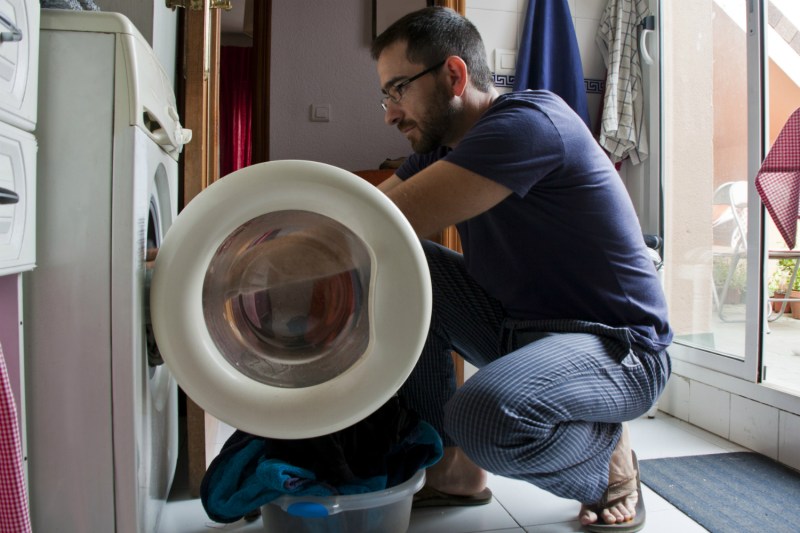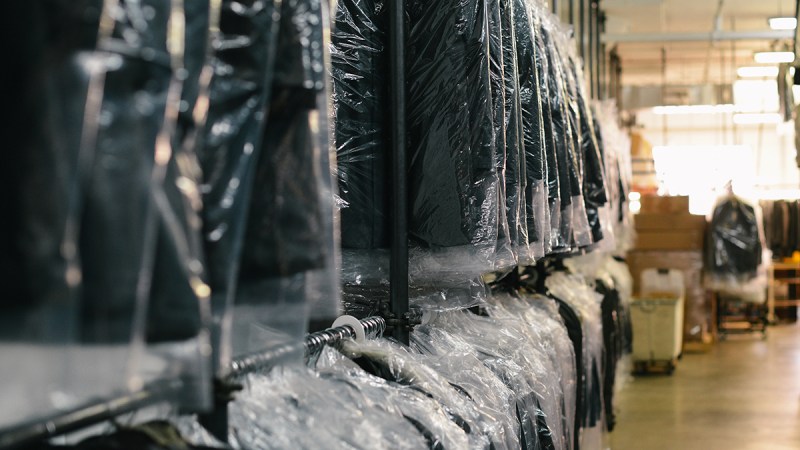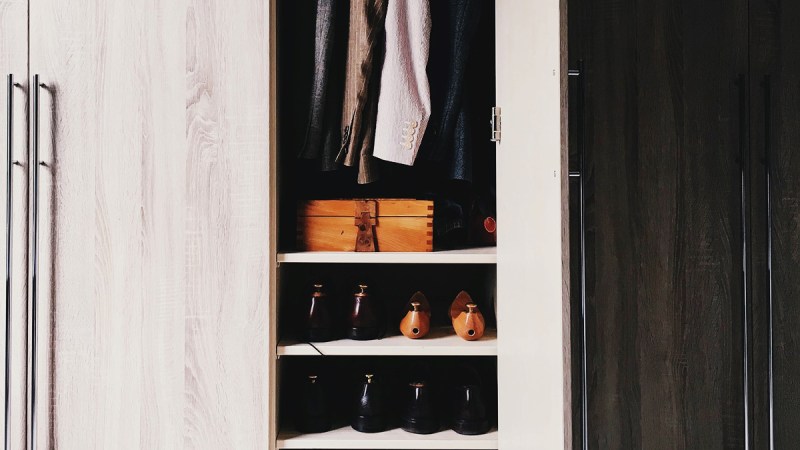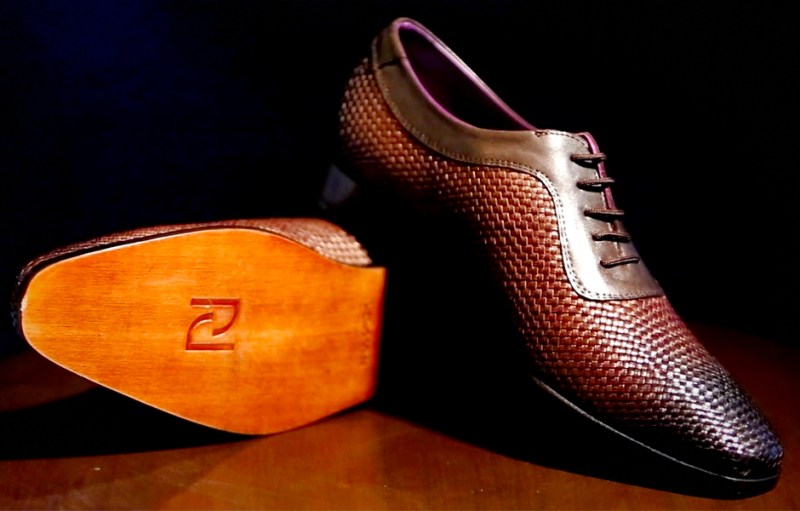
The world today is based on a “throwaway culture.” That means we have become obsessed with one-time-use items like plastic water bottles, grocery bags, and paper towels. While this can make things feel cheaper and easier up front, it can be more expensive and cumbersome in the long run, not to mention hazardous to the environment. This is also true with your wardrobe. There are plenty of places you can get cheap clothing if you just need to wear it one time. In the long run, though, this is detrimental to you, your bank account, and the environment.
Learning how to care for your wardrobe to make it last longer is better for you, your wallet, and your sanity. Invest in quality items that are made to stand the test of time so that you won’t have to shop for clothing every time a new event comes up like other men do. Once you have those quality items, here are the tips that will ensure they last for years, and maybe even a lifetime.

Day-to-day care for men’s apparel
Brushing
Let’s face it: Most of us only have a few suits, if we even have more than one. While you (hopefully) have at least started the four-legged stool, you will want to make those suits last a long time. One easy day-to-day step to ensure their longevity is to brush them gently after each wear. This removes any dirt or food crumbs that may have accumulated through the day. If you don’t, they can settle into the fibers. As those particles decompose, they can attract small insects that will destroy the fabric.
Ironing/steaming
Every man should know how to iron and steam his clothes. Wrinkles happen; whether you’re pulling your clothes out of storage or you’re traveling and your clothes ended up packed away in the luggage abyss after the airline lost them, wrinkles can ruin your day.
We suggest steaming over ironing because it is more gentle on the fabric, and any item can be steamed. Hanging the garment in the bathroom and slowly moving the steamer from top to bottom can remove light wrinkles. If you need something more heavy-duty (thanks, American Airlines), opt for the iron. There are a couple of things to keep in mind. One, never dry iron; use the steam function on the iron or a spray bottle so you don’t damage the fabric. Two, never completely stop the iron; keep it moving so you don’t scorch the garment.

Shaving
No, not your face. When worn often, fabric can pill up, meaning it accumulates little balls of material that stick to the garment. Of course, we won’t tell you not to wear your favorite sweater, but if you wear it too much, it will pill from the material rubbing together. The solution is a fabric de-bobbler. These handy little tools are used to gently shave off the balls of material to keep the garment smooth. While a razor will do in a pinch, we’re not brave enough for that. Plus, you can find one of these life savers for pretty cheap on Amazon.
Minor repairs
Here is a tough one, guys: You have to learn to sew. We’re not saying to take a sewing class to learn how to make a shirt tomorrow, but learning how to make minor repairs will save you mountains of frustration and a little bit of money. Don’t let a small tear or a missing button render one of your favorite garments no good. If you know how to do this yourself, you can even make your partner’s wardrobe last longer too.

Cleaning men’s clothes
Spot cleaning and stain treatment
You should treat stains immediately. How to go about the removal depends on what the stain is and what unlucky fabric you’re trying to save, but the immediacy rule is always in effect. Get on it ASAP for the best results.
Just in case, test any stain remover on a seam or another hidden spot before applying it to the stain. Avoid direct heat, which can speed up the bonding process for most stains, and avoid using solvents with too much pressure or forceful scrubbing.
Laundry
Yeah, you have to do laundry. Here’s the rub: Remember when you first left home and you could just throw everything in the washing machine at one time? Then you could do one load of laundry before taking it back to your dorm room and live out of a laundry basket for a month? Nope, never again, my friend.
Reds, whites, darks, and delicates. You’ll want to do those four major groups of loads. Keeping them separate will help maintain their colors and quality. Here are a few more tips: Turning your garments inside out will help preserve the brightness of the colors. Also, avoid as much heat as possible. Washing in cold water is usually best for clothing.
And stop living out of a laundry basket. Put your clothes away right away and you may avoid having to iron or steam.

Dry cleaning
There’s an old saying that goes, “This is dry clean only, which means it’s dirty.” Dry cleaning is a pain in the butt sometimes. We all are usually too busy to add one more errand to the task list, but some of your clothes will require special cleaning. Linens, silks, wools, and leathers can’t be put in the washing machine at home, so it’s off to the cleaner we go.
How often you get these items cleaned will depend on several factors, but try to clean them only when absolutely necessary. If the item isn’t stained or carrying a lingering smell, brush it, air it out, and wear it again. For your suits, if you’re wearing them often, try not to dry clean them more than once every three months. The chemicals most dry cleaners use will eventually break down the fibers, and overdoing it will severely cut the lifespan of the suit.
Handwashing
Sometimes, it’s easier and better for a garment to handwash it. We know what you’re thinking: Why buy a washer and dryer if you have to handwash your clothes anyway? You can toss most of your clothing into the washer. There will be a minimal number of garments in your closet that will require you to handwash them, which will be easy to do.
The best way to do it is to fill a small, clean bin with room-temperature water and detergent. Turn the clothing inside out and submerge it under the water, gently massaging the fabric. Let it soak for 30 minutes. Don’t wring it out; instead, press it flat into the sink and run water over it to remove all the soapy water, then hang it up to dry.

Storing men’s clothes
Hangers and protection
Not everything in your closet is stored the same way. As a matter of fact, some items aren’t in your closet at all. Save the wire hangers for when you lock your keys in the car; for your wardrobe, you want nice wooden hangers that won’t crease or damage the garments. For shirts, you want at least 3/4 of an inch thick, and for suits, make them over an inch at the shoulder. This helps the garments retain their shape.
If you want to protect your clothing from moths and insects but hate the smell of mothballs (who doesn’t?), opt for cedar or pine hangers. Moths hate the smell, and the scent is pleasant enough for us that there are cedar- and pine-scented candles.
What to hang, what to fold
You should always hang your suits, dress pants, dress shirts, and specialty fabrics (linens and silks) in the closet. Folding suits is cumbersome, and repeated folding can damage the more delicate shirts. You should typically fold sweaters and T-shirts. The weight of the former can cause permanent creases in the shoulders that are unsightly and nearly impossible to get rid of. Hanging them can also warp the collar. Sport polos are somewhere in the middle, but if you have room in the closet, it’s best to hang them up.
For your socks and underwear, it’s best to store them in a drawer or closet to protect them from dust and dirt, so you don’t have to wash them unnecessarily. If you have a large collection of socks and underwear, you may want to use a sock organizer or a drawer divider to help keep them organized and easy to find.
Long-term storage
Let’s face it — even though we want to have an expansive walk-in closet that looks like a clothing store and fits everything we own, most of us aren’t that lucky. We have to make do with what we have; therefore, we must pack away some of our seasonal clothing. When you’re putting clothing into long-term storage, here’s what to keep in mind.
- Wash and dry everything before storing your clothes, so you don’t have to do it later.
- Use pine/cedar hangers to protect clothing. You can also go all out and get some vacuum-sealed garment bags, but some fabrics don’t fare well in that environment.
- Store your clothes in a cool, dry place to avoid mold and mildew development.
- Get rid of what you don’t wear to save space.
- Check your clothes regularly to ensure there are no signs of pests or damage.

Shoe care
Shoes can be expensive, but quality shoes can feel like a considerable investment. If you purchase a pair of Allen Edmonds or another luxury shoe, here are three ways to ensure increased longevity so that you can wear them for years to come.
- Polish the leather. This is mainly for your dress shoes, but any shoe with leather should be treated to protect it from the elements. Your dress shoes should be polished to buff out any scuffs.
- Use shoe trees. Shoes can lose their shape if not worn often or stuffed in a closet where things fall on them. A shoe tree is made up of wooden or plastic blocks that fill the shoe when your foot isn’t in it to retain the shape. We recommend pine blocks to absorb moisture and repel pests.
- Bag or box your shoes. Don’t throw that shoebox away or fill it with old pictures or baseball cards. Putting the shoes away in a box or bag can protect them from accidents, such as something falling on them or even minor flooding.

Leather care
Leather is one of the manliest materials you can wear. Whether you’re rocking a pair of rugged outdoor boots or donning a stylish leather jacket, you’ll want to treat the leather. Engage in a little TLC or tender leather care. A leather jacket should be kept fresh with a high-quality cleaner, backed up by regularly applying a moisturizing balm enriched with ingredients like vitamin E and natural minerals to help keep the material supple and avoid cracks.
Building a wardrobe can seem daunting at the beginning, but once you start to find the garments, brands, and styles you like, picking up quality items will become easier. If you are taking care to use the above methods, then your shopping will come down to the occasional upgrade or spur-of-the-moment buy when you see something that fits your closet perfectly.
Editors' Recommendations
- These 6 ’90s fashion trends for men have staying power
- Men’s spring fashion essentials: You need these 5 pieces in your spring wardrobe
- The hottest men’s denim trends: How to update your casual wardrobe
- How to style the henley shirt, the versatile men’s fashion item your wardrobe needs
- The 25 wardrobe essentials every man needs: Your ultimate men’s fashion checklist



